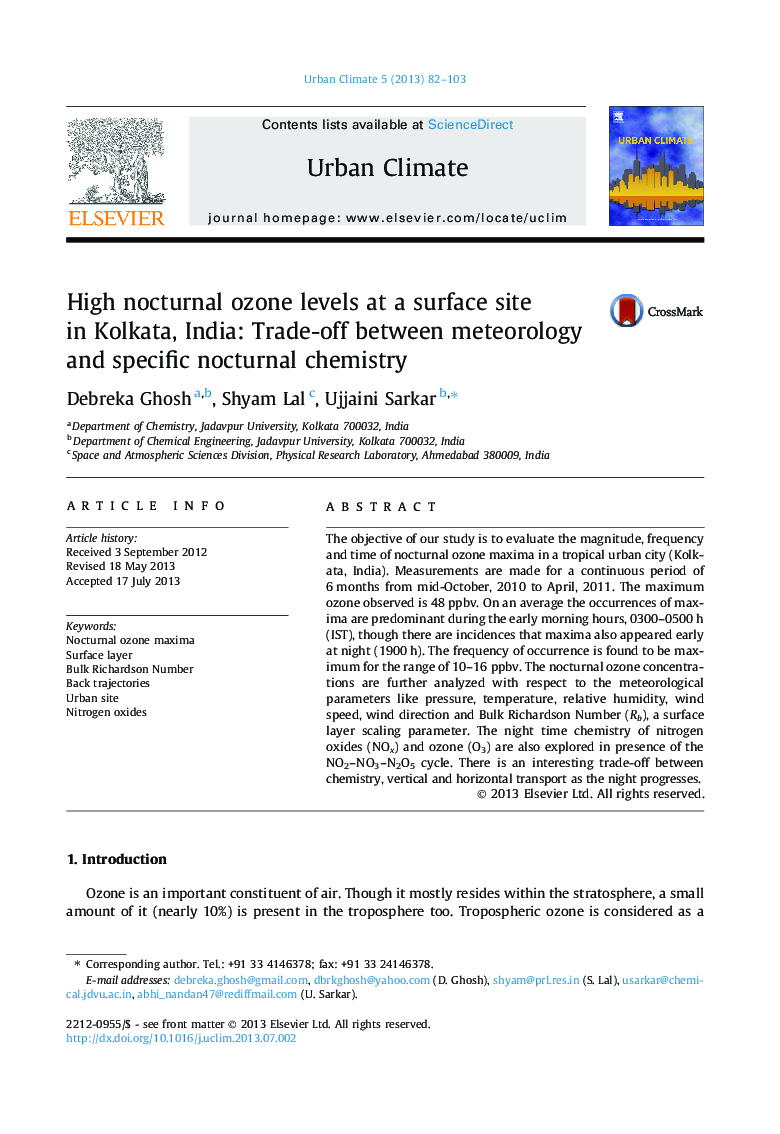| Article ID | Journal | Published Year | Pages | File Type |
|---|---|---|---|---|
| 143790 | Urban Climate | 2013 | 22 Pages |
•Magnitude, frequency and time of high levels of nocturnal ozone are observed.•Ozone concentrations are related to meteorological parameters.•Surface layer scaling factors like Bulk Richardson Number are computed.•The night time chemistry involved an interesting NO2–NO3–N2O5 cycle.•A trade-off between chemistry, vertical and horizontal transport is seen.
The objective of our study is to evaluate the magnitude, frequency and time of nocturnal ozone maxima in a tropical urban city (Kolkata, India). Measurements are made for a continuous period of 6 months from mid-October, 2010 to April, 2011. The maximum ozone observed is 48 ppbv. On an average the occurrences of maxima are predominant during the early morning hours, 0300–0500 h (IST), though there are incidences that maxima also appeared early at night (1900 h). The frequency of occurrence is found to be maximum for the range of 10–16 ppbv. The nocturnal ozone concentrations are further analyzed with respect to the meteorological parameters like pressure, temperature, relative humidity, wind speed, wind direction and Bulk Richardson Number (Rb), a surface layer scaling parameter. The night time chemistry of nitrogen oxides (NOx) and ozone (O3) are also explored in presence of the NO2–NO3–N2O5 cycle. There is an interesting trade-off between chemistry, vertical and horizontal transport as the night progresses.
